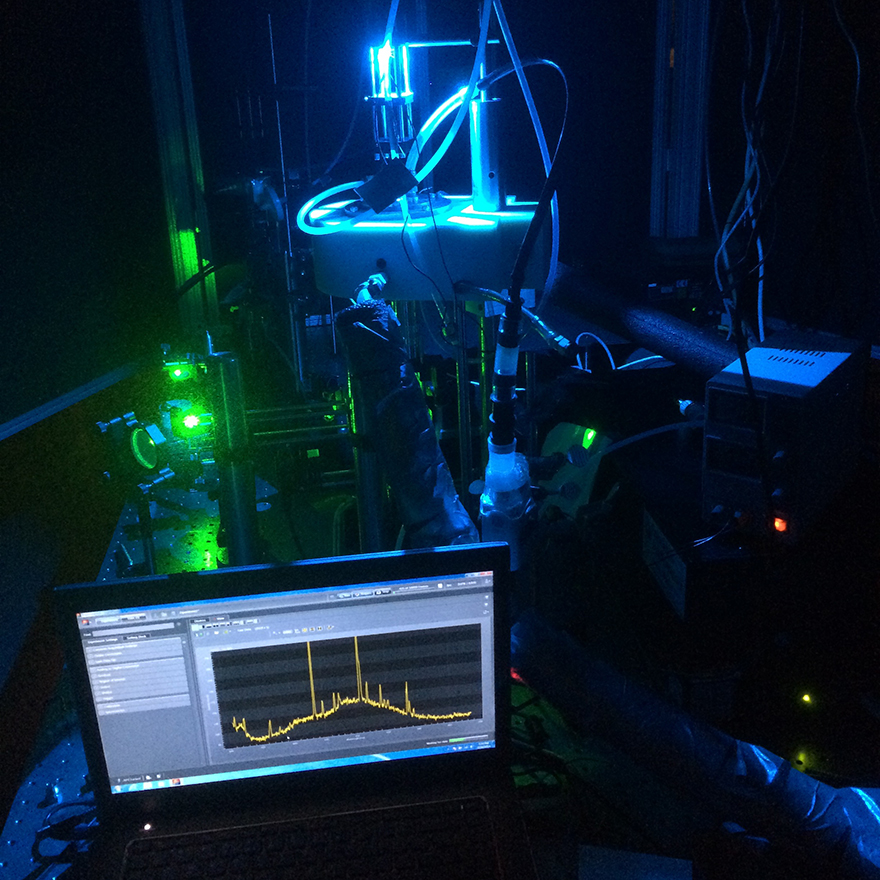Tweezing out the properties of particles
Assistant Professor of Mechanical Engineering and Chemistry Ryan Sullivan and his research team have developed a way to isolate a single particle to study the way it individually interacts with the atmosphere.
Particles are all around us. And while we may not be able to manipulate them as easily as Neo in “The Matrix,” Assistant Professor of Mechanical Engineering and Chemistry Ryan Sullivan and his research team have developed a way to isolate a single particle to study the way it individually interacts with the atmosphere.
Sullivan’s team developed the aerosol optical tweezers, a tool that traps a single particle in a laser beam. The laser induces a Raman vibrational spectrum that allows a spectrometer to collect real-time information every second about the particle as it evolves. The researchers can then throw materials at the droplet and observe how it changes: does it grow? Does the morphology, or shape, of the particle change? Do all the components mix together, or exist in separate phases?
“Our approach with the optical tweezers allows us to determine the morphology of those individual particles as we change their composition or the surrounding gas-phase environment,” said Sullivan.
The morphology determines how new material mixes with the existing droplet: if it forms a shell, if it mixes completely with the core of the droplet, or if it forms an inclusion—where the materials hang on as a lens of the droplet’s surface.

Source: Carnegie Mellon University
Sullivan’s team developed aerosol optical tweezers to trap a single particle in a laser beam to collect real-time information about the particle as it evolves.
As the particle moves through the atmosphere it experiences chemical aging that change the climate forcing properties of particles: their ability to absorb or reflect light, or to nucleate clouds. The climate forcing properties are driven by interactions between particles with sunlight and water in the atmosphere.
Knowing what’s at the interface of particles is key to understanding how the particle impacts the environment. Particles can become cloud-nucleating particles that form frozen clouds (the type more likely to rain) or liquid clouds. Liquid clouds have a cooling effect on the planet by reflecting sunlight and offsetting heating from greenhouse gases, while frozen clouds actually have a net heating effect on the planet because they trap outgoing infrared radiation emitted by the Earth.
The optical tweezers technique determines what is at the interface of the particles, which determines how a particle will behave in the atmosphere, and affect climate. For example, if an organic carbon shell forms around an aqueous core it will impede a particle’s ability to take water and activate into a cloud droplet. But if the particle is in an aqueous phase at the interface, then the particle can readily take up water and activate into a cloud droplet, helping to produce a liquid cloud.
“We can’t just assume that when we add material to a particle that it’s always going to form a uniform shell, or going to form a lens, or just mix homogenously,” said Sullivan. “We study how to get those three different morphologies depending on particle make-up and also the environmental conditions such as the amount of water vapor available. The optical tweezers allows us to directly measure these changes in morphology in a unique way, for individual particles.”
The study, titled “Advanced aerosol optical tweezers chamber design to facilitate phase-separation and equilibration timescale experiments on complex droplets,” was published in Aerosol Science and Technology.
